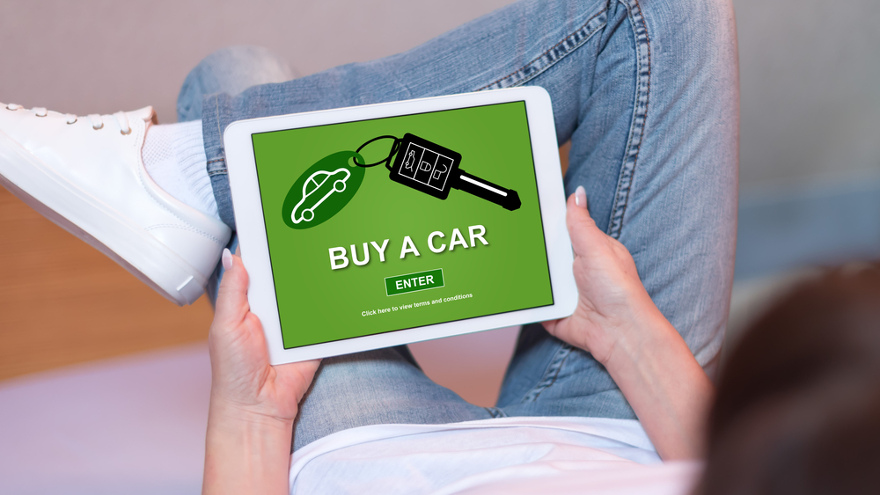COMMENTARY: From clickstream to showroom — guide to converting online shoppers

By subscribing, you agree to receive communications from Auto Remarketing and our partners in accordance with our Privacy Policy. We may share your information with select partners and sponsors who may contact you about their products and services. You may unsubscribe at any time.
It is no surprise; American shoppers are spending more time and money than ever before online. This surge in e-commerce has created a new breed of customer and economy, dubbed the Engagement Economy.
There has been a dramatic rise in online shopping in the last four years. Many consumers are making online purchases every single week.
Why your dealership website needs a shift
As people interact more online, they began to judge the quality of their services and experiences based on their engagement. The result is the “engagement economy.” Economic value, client satisfaction, and company growth are all inextricably tied to client engagement.
While traditional in-person engagement is still critical, it alone is no longer enough to meet clients’ expectations. To succeed, traditional relationships must be supplemented with strong digital engagement.
For car dealerships, this translates to websites that mirror the positive online shopping experience customers have elsewhere. A dealership’s website is the battleground for converting digital window shoppers into potential buyers. Falling short on the digital experience can be the difference between a sale and a lost opportunity.
The problem: Dealership websites are stuck in first gear
The current state of the digital experience with many car dealerships starts with intrusive contact forms, demanding personal information upfront, offering nothing in return and creating a frustrating delay for the shopper. If a shopper manages to stick around after the contact form, they are often met with disjointed shopping steps. Separate tools for trade-in valuation, test drive scheduling or financing require the buyer to jump through hoops to find the information they need or require repetitive information entry.
Subscribe to Auto Remarketing to stay informed and stay ahead.
By subscribing, you agree to receive communications from Auto Remarketing and our partners in accordance with our Privacy Policy. We may share your information with select partners and sponsors who may contact you about their products and services. You may unsubscribe at any time.
And say a buyer gets interrupted by a phone call at work, a kid at home or any number of potential interruptions that pull them away from the website at that moment, many dealership websites today require them to start from the beginning when they revisit the site.
Missing shopping carts require them to re-enter the repetitive information they have already entered, click away from that annoying contact form, and click through multiple tools to find the right one. All to create a frustrated customer that at best buys a vehicle with a terrible experience and at worst leaves a review to match the experience.
So, what kind of online experiences are shaping customer expectations?
- Convenience reigns supreme: In an article from the National Retail Federation titled “Convenience and The Customer” it was reported that 83 percent of shoppers prioritize convenience more today than ever before. This means offering 24/7 shopping capabilities.
- Mobile-first matters: A mobile-friendly website is no longer a luxury, it’s a necessity.
- Frictionless shopping: Customers crave an uninterrupted path to purchase. In a recent McKinsey & Company survey discussed in their article “The value of getting personalization right—or wrong—is multiplying”, it was revealed 75 percent of shoppers prioritize an easy-to-navigate shopping journey – whether that’s online or in store, ranking it as the most important aspect of their shopping experience.
- Self-service with support: While some shoppers prefer to answer questions independently, others value the option of live assistance.
- Invesp, a leading conversion optimization company, reported in their article “The Importance of Live Chat Support – Statistics and Trends,” that customers prefer chatbot as it gives them the ability to multitask and avoid phone calls.
- However, the desire for human interaction remains strong, with Drift (Salesloft) reporting in their 2023 Conversation Trends Report, a 250% increase in requests for live support observed between 2022 and 2023.
- Nearly 60 percent of U.S. customers value the ability to interact with a real person for a positive customer experience, as stated by Mintel in their 2024 Global Consumer Trends report.
- Easy re-engagement: Shoppers abandon online processes for several reasons. The key is to make it effortless for them to pick up where they left off.
The bottom line? It’s all about your customer.
Take a walk in your customer’s digital shoes. Does your website offer a seamless experience, guiding shoppers through the process, eliminating information re-entry, and offering options for both self-service and live help? Can they easily resume their shopping journey if they leave and come back?
Enlist the help of a friend or family member – someone who represents your target audience but is less familiar with your website. Ask them to navigate your website like a typical car shopper — researching the car they want, seeking answers to questions about trade-in value, financing, and aftermarket add-on options. Ask them to compare their experience to their online shopping habits for other products. Take it one step further and analyze your website data to see where shoppers seem most engaged, where they drop off and what tools are giving them the most trouble.
In today’s digital age, car dealerships that prioritize a customer-centric experience — both in store and online — will be the ones driving sales and leaving the competition in the dust.


